Today, the savvy marketer understands that the consumer is no longer a silent audience but is increasingly in search of an experience. Car manufacturers across the country are no longer selling mere products or services, as it is an ‘experience’ that everyone is trying to create, deliver, and buy. The modern-day automobile buyer is on a search for brands that seem human and resonate with them, which is the need that has led to the emergence of experiential marketing in the automobile industry. And as realisations generally go, it wasn’t a far-off jump from experiential marketing to the utilisation of immersive tech to enhance the experience being created.
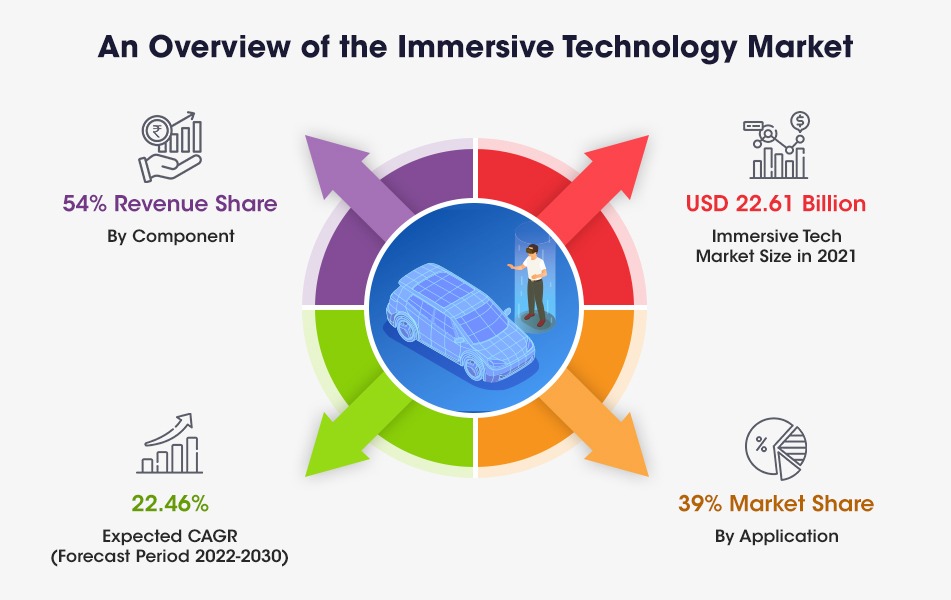
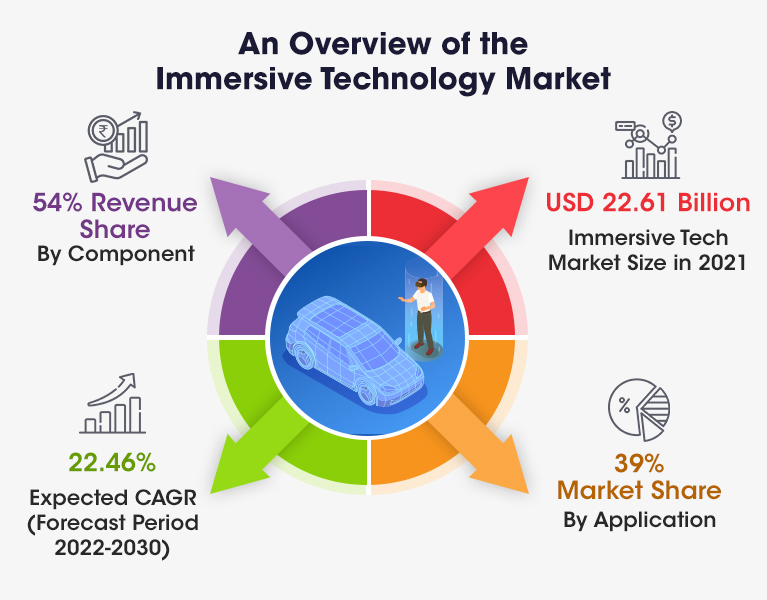
Source: https://bit.ly/42BKNKb
How Virtual Reality Helped the Automobile Industry Deal with the Impact of the COVID-19 Pandemic
The automobile industry was one of the worst-hit sectors during the 2020 pandemic. Not only were manufacturers faced with lower production with stringent social distancing norms being requisite across factories and offices, but the lockdowns that were affected across the world also lowered their sales.
However, let’s not forget that the automobile industry, one of the first sectors to implement automation along its production line, has always been open to new innovations, and always ready to adapt technology to enhance its prospects. In this particular scenario, it was virtual reality technology that the industry harnessed to create its own opportunities for handling the impact of the pandemic. A simple VR headset supported designing and prototyping and helped deliver proper training to technicians across geographies while also maintaining social distances (and more).
The implementation further evolved, leading to virtual reality showrooms and even virtual environments where customers could test drive the vehicles without having to step outside. Still in a rather nascent stage, VR has done its job, helping boost sales across the automobile industry, but still has vast unexplored avenues of application that we still need to explore.
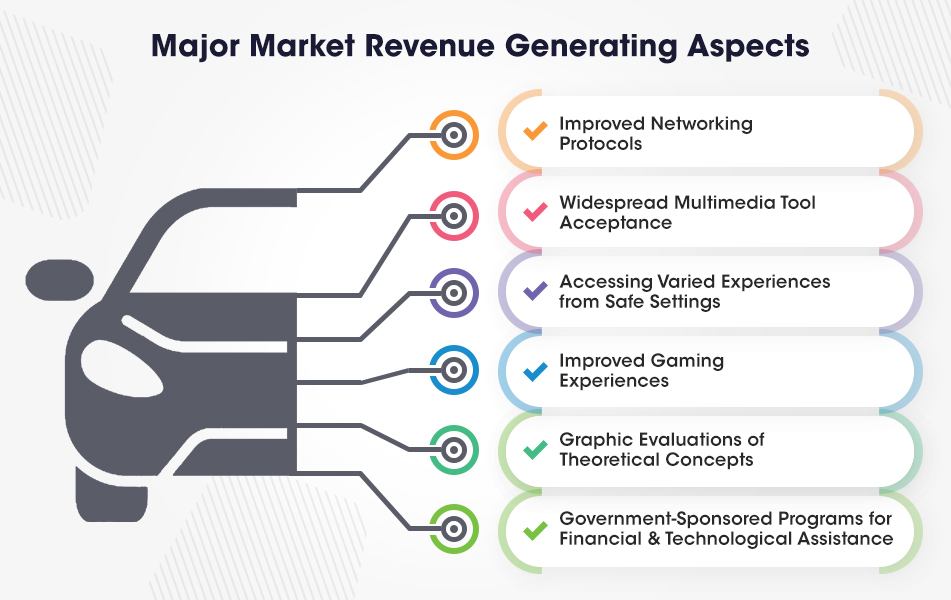
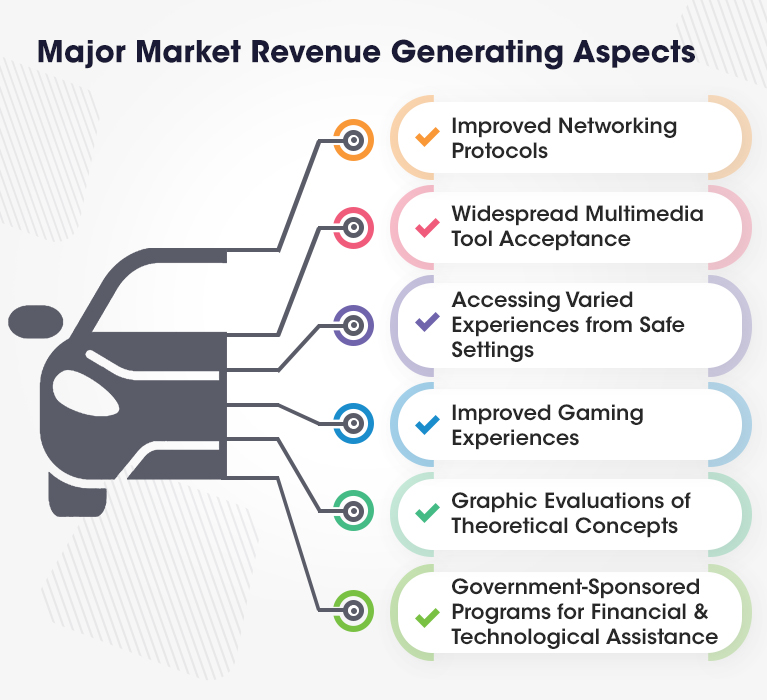
From Innovative Solutions to Part and Parcel of the Automobile Landscape
As this latest trend helped the sales figures of manufacturers, enhanced operational efficiency across the manufacturing floor, and delivered to customers exactly what they were looking for. Manufacturers took purchase journeys to a whole new level, with unique and memorable touchpoints that enhanced engagement and the buying experience, which in turn helped drive increased conversions.
Consumer behaviour had already shifted towards following a more detailed and analytical approach for buying big-ticket products, like cars, and manufacturers were left with a tiny window for engaging prospects in a manner that may lead to a conversion or at least an in-person visit to a showroom. Immersive tech proved to be the perfect solution for these scenarios as well, for with online car configurators, AR demos, VR test drives, and 3D visualisation, brands could now make the online research part of a customer’s journey much more interesting and fun, and the ‘wow’ factor in many cases was the tipping point in bridging the online-to-offline gap.
All in all – The capabilities of immersive technology were obviously well-suited for the automobile industry. But what next?
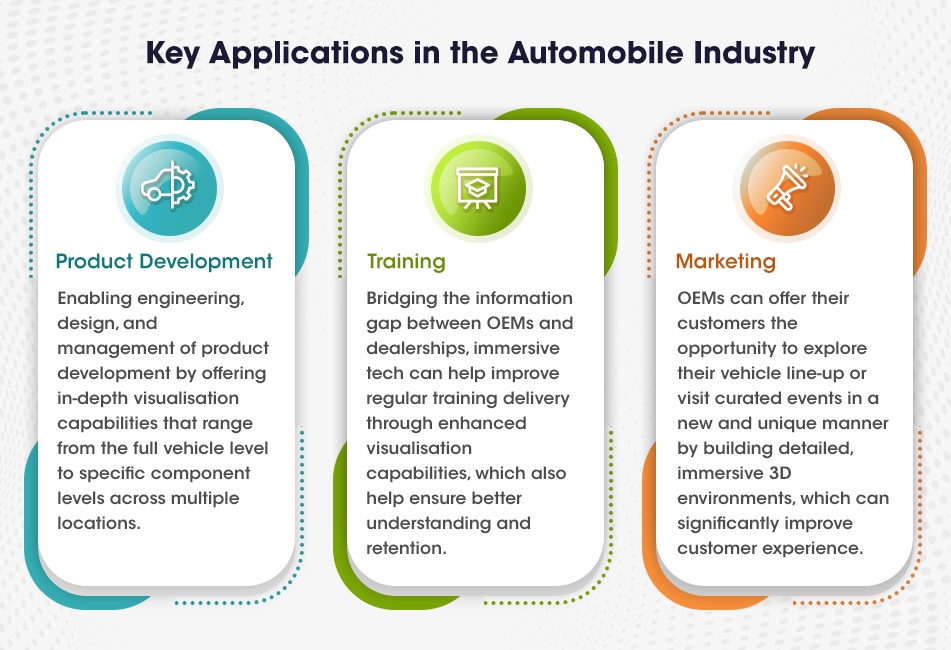
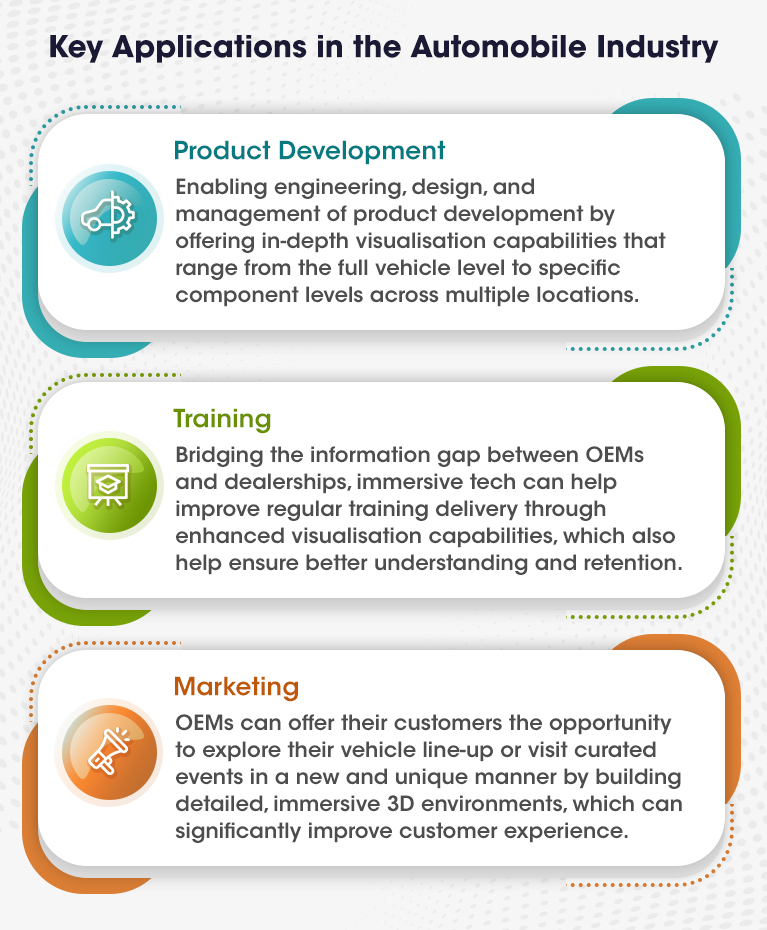
The Real Question
Many Years Have Passed Since Immersive Tech Was Introduced. What Changed?
Many businesses started experimenting with AR and VR technologies more than half a decade ago. However, this was back in the time when the VR landscape did not have much to offer in terms of a good user experience design, and issues like eye strain and disoriented sounds were still challenges that needed to be overcome. Additionally, a need was felt for more convenience – the availability of more choices as well as accessibility and affordability – which limited the reach of immersive tech to a niche audience during its initial years.
How Automobile Brands are Transforming Their Marketing Efforts
VR headsets are gaining mass appeal by the day. Along with the introduction of the Metaverse, this has helped the technology finally step beyond its limitations. While massive transformation can already be seen, one thing we can be sure of is that there’s still a lot to be explored in the capabilities of immersive tech.
The opportunity is ripe for brands to transform their traditional marketing efforts. Here’s why [Subheads below will be expanded with explanations]
- Elevates Real Life Experiences
- Facilitates and Digitalises The ‘Try-Before-You-Buy’ Practice – examples of brands
- Maximises Impact of Social Media Marketing
- Sustainable (better for the environment)
- Optimises Touchpoints
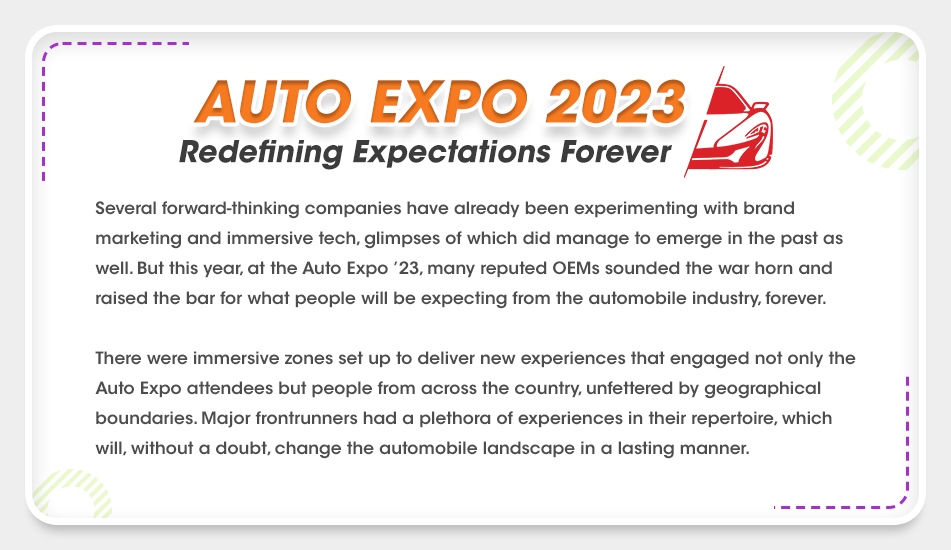
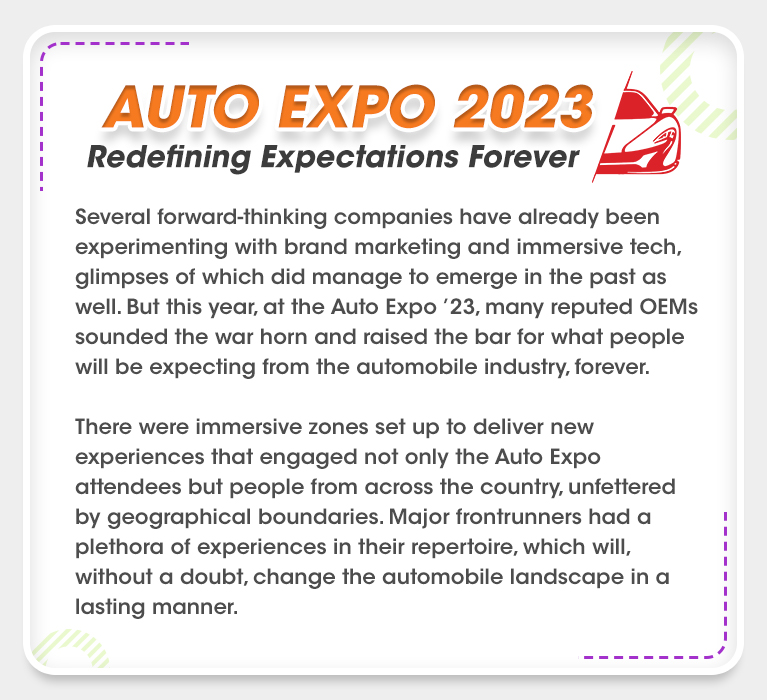
What Does The Future Hold?
The immersive VR experience has become a crucial aspect for automobile brands that want to resonate with potential as well as existing customers. Stakeholders can now significantly simplify purchase decisions while strengthening brand loyalty. Despite the many new opportunities for value creation that immersive technology brings to the table, we are still at a very primitive stage in the evolution of the immersive landscape. Integrating this new reality into existing marketing efforts is necessary for forging the road to success in the coming times.
Don’t be late, the (virtual) party is just about to start!
A data-driven Marketer with 8+ years of experience in Digital Performance & Branding Campaigns for Multiple Brands who also specializes in Mobile App Marketing. With an MBA in Marketing & Operations from IBS Hyderabad, he has a proven track record of planning, managing & optimizing various digital campaigns related to Acquisition, Engagement, Branding, and Retention for clients ranging from various Industries.
Technology | Digital Marketing | Mobile App Marketing | Marketing Strategy | Product Management | Digital Analytics
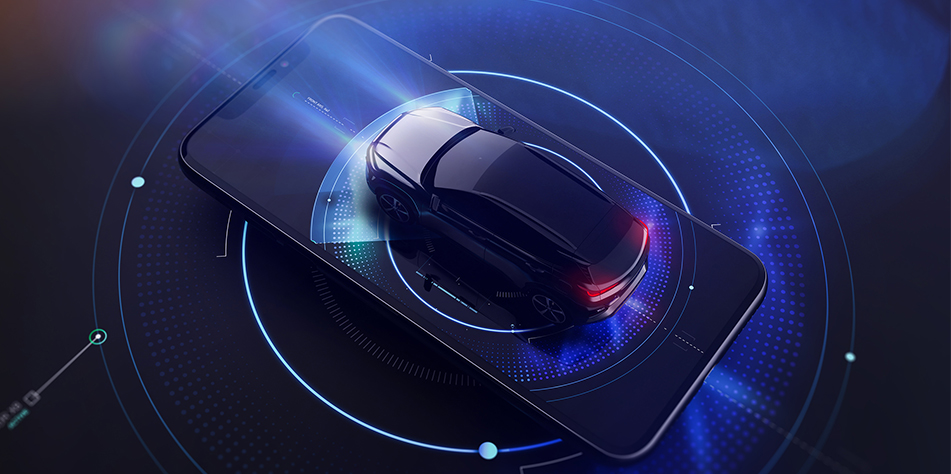





Leave a Comment